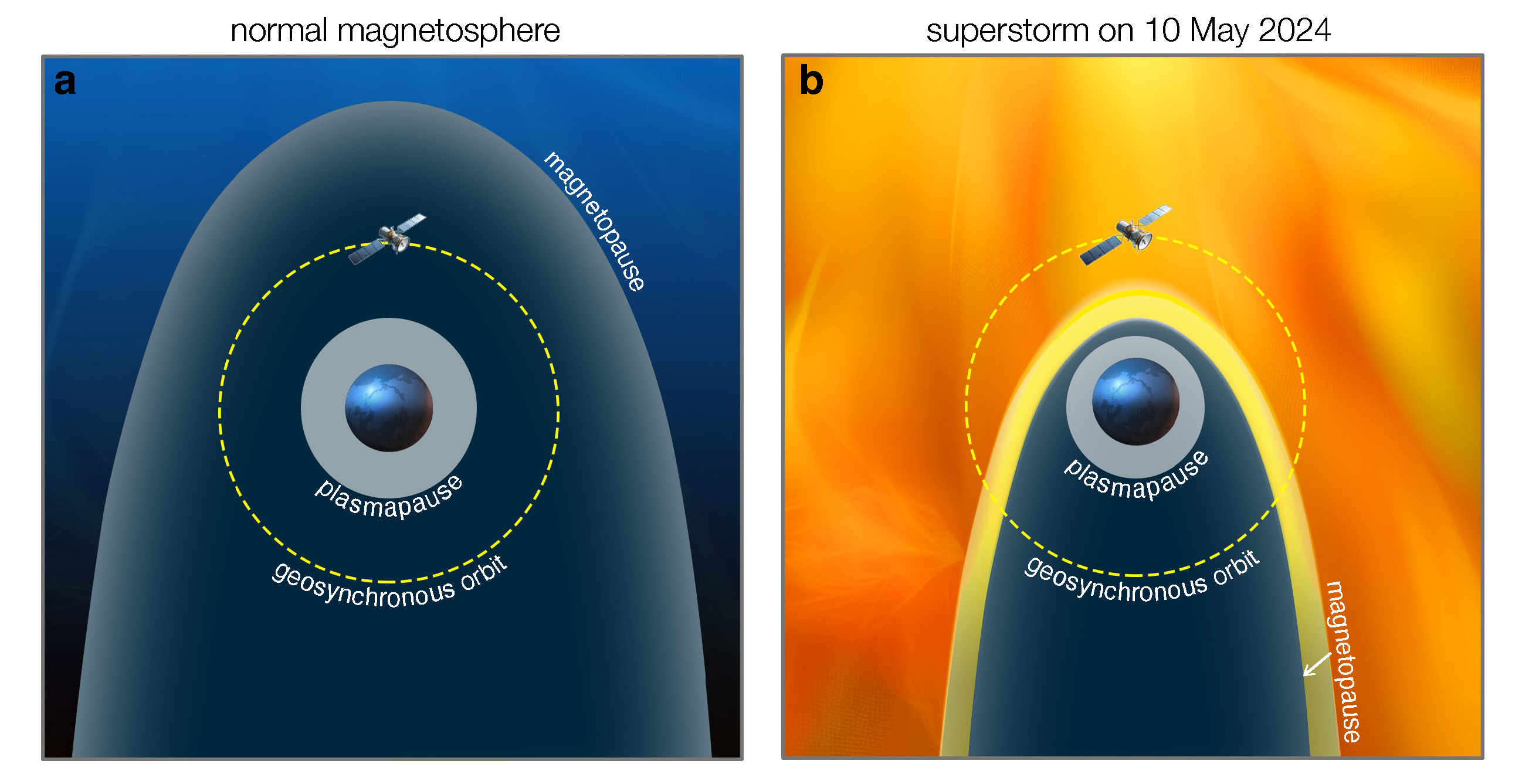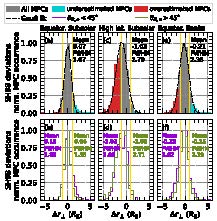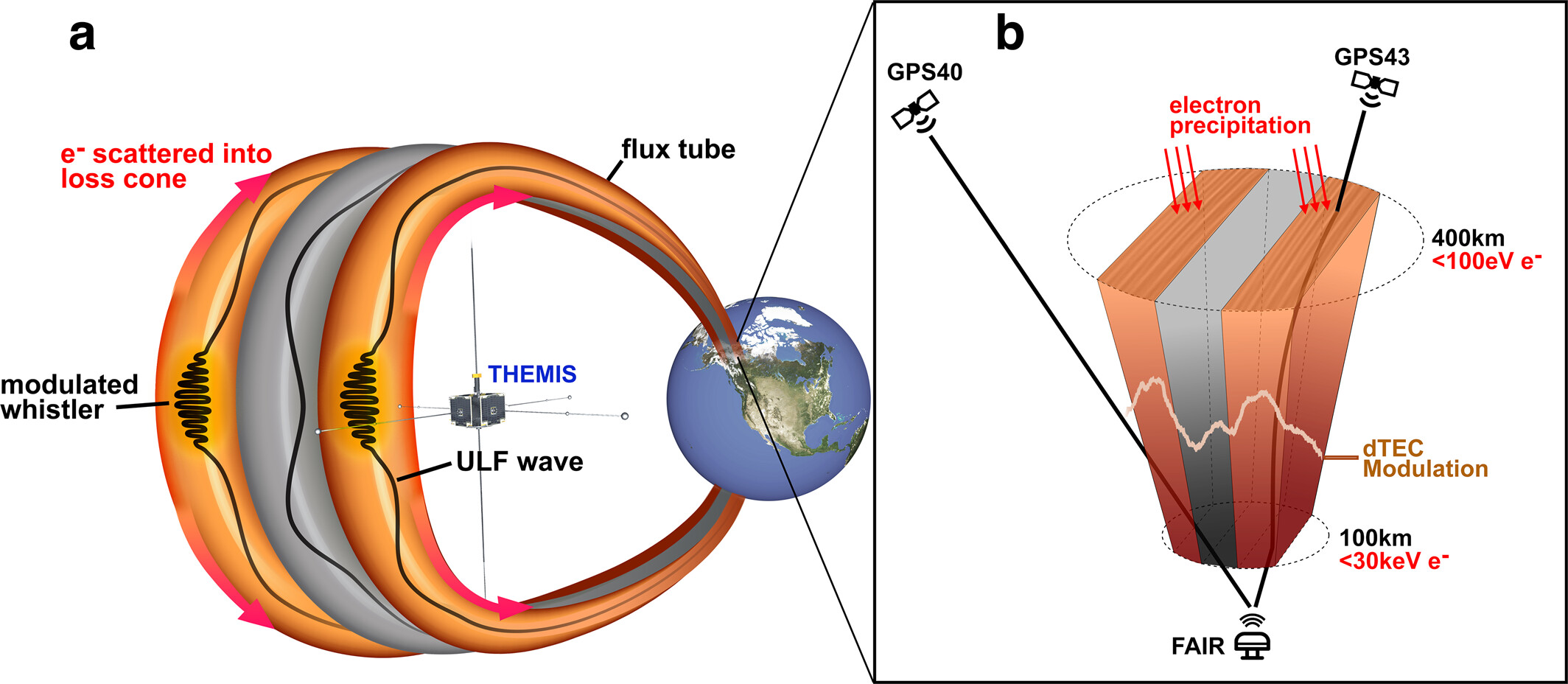
2025 THEMIS SCIENCE NUGGETS
SUMMARIES OF THEMIS RESEARCH
| <<View 2024 THEMIS Nuggets | Return to main page |
 Wending Fu and Huishan Fu, January 2025
Wending Fu and Huishan Fu, January 2025Compression of Earth’s magnetopause down to 5 R E during the superstorm on 10 May 2024
By utilizing in-situ measurements of multiple spacecraft together with THEMIS ground-based magnetometers, we for the first time determine the extreme compression of the magnetopause from higher than 10 R E down to 5 R E . This observation of such severe deformation is also consistent with the prediction of the theoretical model. Read more.
 Krishna Khanal, February 2025
Krishna Khanal, February 2025Controlling factors of the spatial extent of reconnection X-line on dayside magnetopause
We conducted a statistical investigation of the dayside magnetopause reconnection extent using 39 space–ground conjugate observations. The azimuthal extent of reconnection exhibits substantial variability, ranging from ~1.5 hr to ~6.5 hr in magnetic local time (MLT), and is influenced by the solar wind speed. Read more.
 Sanjay Kumar, February 2025
Sanjay Kumar, February 2025Ion Moment Variability Across Substorm Phases: Statistical Insights
While numerous studies have explored fast and slow ion flows and dawn-dusk asymmetries in the plasma parameters within the plasma sheet, questions remain about how these flows and plasma properties evolve throughout the substorm cycle, particularly the statistical distributions of earthward and tailward flows and asymmetries in ion density and pressure during different phases. Read more.
 Niklas Grimmich, March 2025
Niklas Grimmich, March 2025Investigation of the occurrence of significant deviations in the magnetopause location: solar-wind and foreshock effects
In this study, we examine how different types of solar wind and the presence of an upstream foreshock might explain why the real observed magnetopause sometimes does not match model predictions, using data from spacecraft missions in near-Earth space (Cluster, THEMIS and MMS). Read more.
 Michael Hartinger, June 2025
Michael Hartinger, June 2025Statistical Analysis of Ultra-Low-Frequency Total Electron Content Disturbances: Relationship to Magnetospheric Waves
In this study we combine THEMIS satellite measurements above the ionosphere with GPS receiver and magnetometer measurements below the ionosphere, along with lists of earthquakes and other surface disturbances, to isolate and study conditions when plasma waves above the ionosphere affect electron dynamics in the ionosphere. Read more.
 Yangyang Shen, August 2025
Yangyang Shen, August 2025Streamer-like red line diffuse auroras driven by time domain structures associated with electron injection and braking ion flows
This study establishes the first direct linkage between streamer-like meso-scale red-line auroras and plasma sheet electron pitch-angle scattering by TDSs, underscoring the importance of wave-driven diffuse auroral processes in generating low-energy auroral streamers, distinct from the conventional streamer quasi-electrostatic coupling paradigm. High correlations between observed and forward modeled auroral intensity help establish high-fidelity magnetic mapping during geomagnetically active periods. Read more.
 Please send comments/suggestions to
Emmanuel Masongsong / emasongsong @ igpp.ucla.edu
Please send comments/suggestions to
Emmanuel Masongsong / emasongsong @ igpp.ucla.edu